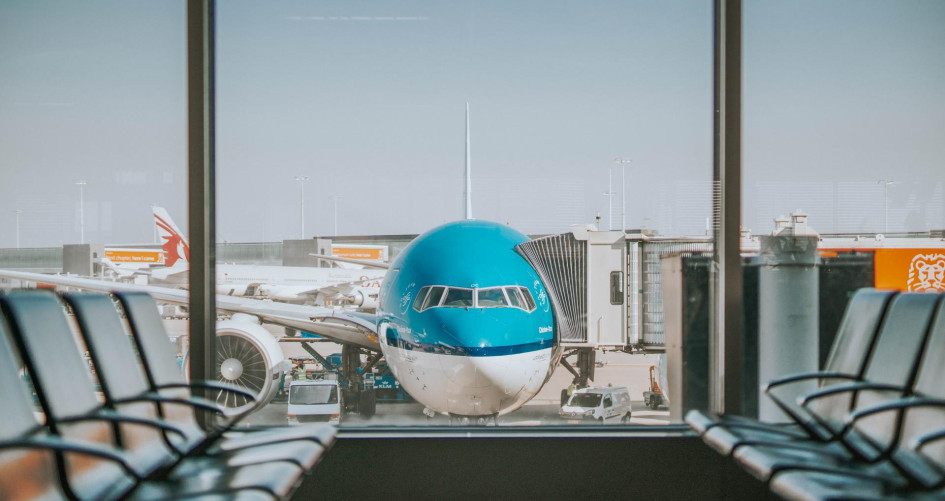It’s not flying that’s the enemy, it’s carbon. That’s the message from the airport industry as it looks to innovate and reduce its emissions in the next few decades. And while there has been a lot of noise around the aviation industry and its emissions in recent years, there has been less talk about airports and their role in the climate crisis. Of course, airports have a big impact on the environment, from issues around biodiversity and pollution to water management and, of course, emissions. Yet the industry as a whole is moving towards net zero, and many airports have made huge strides when it comes to sustainability.
Some of these strides were highlighted at the Climate Action Hub at COP26, where Airports Council International (ACI) Europe’s Director General, Olivier Jankovec explained what progress has been made. Based in Brussels, the ACI represents more than 2,000 airports around the world, with the goal of advancing the industry globally and pushing for better practices around the world.
In June 2019, its members committed to net zero carbon emissions for all operations under their control by 2050, without resorting to offsetting. The Roadmap has five key steps: Map carbon footprint; Explore reduction measures; Analyse pathways, refine targets; Develop your roadmap; Deliver. Of course, there are different definitions of what ‘net zero’ actually means, and there is still debate whether it is even possible for an airport to be truly net zero without resorting to offsetting.
“Aviation is in the spotlight for its impact on climate change, and so we need to work very hard on this issue,” Jankovec says. Yet the industry has been working on solutions. “Carbon management at our airports started in 2008, when we adopted a resolution to reduce emissions,” he says. Right now 357 airports across the world are certified as Airport Carbon Accredited, representing 46.1 per cent of global air traffic. That figure includes 58 carbon neutral airports and a total of more than 322,000 tonnes of CO2 reduced annually. “Also, in 2019, ACI committed to becoming carbon neutral by 2050, and 242 airports have individually signed up to that goal too,“ Jankovec says.
So, where do an airport’s emissions come from? “When we talk about the emissions that airports control, we are talking about any of the energy production facilities on-site, and of course all the vehicles that work across the airport, says Jankovec. “You also have the emissions generated by people going to and from the airport, which many airports are trying to address, but of course that’s not under the direct control of the airport. In terms of reducing those emissions, there is a range of things an airport can do. “In terms of the emissions that are under direct control of the airport, it’s quite straightforward. The key issue is the supply of green energy, as if you want to decarbonise your buildings, you need to have access to green energy to cool and heat those buildings.”
Is it possible for an airport to achieve net zero, without resorting to offsets? Ten airports in Sweden claim they have already reached that milestone, although they clearly benefit from being in a country with a green electricity grid.
In terms of pushing down aviation’s emissions in the future, there is, according to Derek Provan, CEO of AGS Airports (who own Glasgow, Aberdeen Southampton airports) there’s no silver bullet, but rather a “silver bucket” of options. “Something like Sustainable Aviation Fuel is certainly vital for the industry, and airlines see it as being 50 per cent or more of their road to net zero,” Provan says. “The airports we run are regional, and a lot of our flights are ultra-short haul within Scotland and so these sort of flights can be test beds for new technologies.” Indeed, Logan Airlines are planning a test hydrogen flight in Orkney in 2023, while short-haul electric flights are planned for 2024.
For AGS, the discussion is not just about reducing emissions but about what airports could (and should) be. “All AGS airports are carbon neutral, and will get to net zero by mid-2030s, but we want to go beyond decarbonisation,” Provan says. “We want to look at the circular economy and reduce waste. For example our security bags are biodegradable, which saves more than 2.5 million single-use plastics every year.”
That “value-add on” extends to other areas too. “Airports are no longer just facilitators of transport, they are servants to the regions and countries they operate in,” Provan says. To illustrate this, he mentions a project where Glasgow airport is leading a project where drones will deliver medical supplies to remote parts of Scotland, providing a vital social service and cutting out the emissions that those journeys would have created by more conventional modes of transport.
These innovations are happening around the world. Vancouver Airport aims to be net zero by 2030, while Rolland Garros Airport on the island of Reunion is building the world’s first ‘bioclimatic’ terminal, which uses the wind to cool the building rather than air conditioning.
On the Galapagos Island, the airport has been carbon neutral since 2017, and with 100 per cent of its energy coming from renewable sources and staff getting around the airport on bikes.
Connectivity is a vital part of the modern world and so airports will need to continue to make strides – and work with the wider aviation industry – so that one day, we can travel without impacting the planet.
